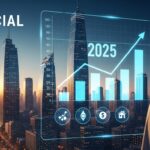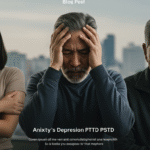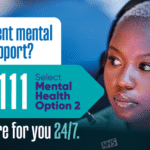Supplemental Savings Plan
A Supplemental Savings Plan (SSP) provides eligible individuals the opportunity to save for retirement on a regular and long-term basis. It allows participants to designate a portion of their compensation to be deferred and invested.
Key Aspects of Supplemental Savings Plans:
-
Purpose SSPs are designed to help individuals save for retirement by deferring and investing a portion of their income.
-
Eligibility Eligibility is determined by the specific plan documents.
-
Contributions Contributions can be made through elective deferrals, automatic elective deferrals, and rollovers.
-
Investments Participants can invest their contributions in various investment funds.
-
Limitations SSPs are subject to contribution limits under the Internal Revenue Code.
-
Distributions Distributions are typically made after the participant has a severance from employment.
Teachers’ Retirement System of the State of Illinois Supplemental Savings Plan
The Teachers’ Retirement System of the State of Illinois (TRS) offers a Supplemental Savings Plan (SSP) for the benefit of eligible members. It is an eligible deferred compensation plan under Section 457(b) of the Internal Revenue Code and is considered a governmental plan under Code Section 414(d) and Section 3(32) of ERISA. Because it is a governmental plan, ERISA regulations do not apply.
Student Self-Placement
RELATED POST>>> Personal Loan Application Process
Student self-placement (SSP) is a method used in education to allow students to choose their course levels, often in writing programs, based on their self-assessment of their skills and readiness.
Key Aspects of Student Self-Placement:
-
Dynamic Assessment SSP is viewed as a dynamic assessment ecology, impacting placement and how students view themselves as writers.
-
Self-Reflection SSP involves students’ reflections and self-characterizations, providing insights into how they perceive themselves as writers and understand college writing expectations.
-
Corpus Data Analyzing corpus data from SSP responses can reveal potential tensions between students’ and institutions’ understandings of academic writing.
-
Ecological Impacts SSP has ecological impacts beyond placement, influencing students’ conceptualizations of writing and their identities as writer.
Considerations for Further Research
To write a 5,000-word article, further research could explore:
-
The history and evolution of SSPs in retirement planning and education.
-
Comparative analyses of different SSP models and their effectiveness.
-
Case studies of successful SSP implementations and their impact on participants.
-
The role of technology and data analytics in enhancing SSP outcomes.
-
The ethical and legal considerations surrounding SSPs, including issues of access, equity, and transparency.
To get started, consult academic databases, professional organizations, and government resources related to retirement planning and education.
ALSO READ>>> How to Apply for a Home Equity Loan in 5 Easy Steps
2. Cheap car Insurance, Risk and Profit
What are the main benefits of the SSP for participants
The acronym “SP” can refer to several different programs. Therefore, the benefits depend on which program is being discussed.
1. Safe and Sound Protocol (SSP):
-
Enhanced Emotional Regulation SSP can help achieve a state of calm and safety, making it easier to manage emotions, leading to feeling more balanced and less reactive.
-
Improved Social Engagement It promotes a sense of safety and reduces hyperarousal, enabling individuals to experience deeper connections with others, which is particularly beneficial for those with social anxiety, autism spectrum disorders, or trauma-related difficulties 1. Improvements in social awareness have been reported in adults with autism.
-
Reduction in Anxiety and Stress SSP can reduce symptoms of anxiety and stress by fostering a state of relaxation that downregulates the sympathetic nervous system and activates the parasympathetic nervous system. It may also lead to a reduction in state anxiety.
-
Support for Trauma Recovery By creating a sense of safety and calm, SSP can help individuals process traumatic experiences without becoming overwhelmed, providing a foundation for other therapeutic interventions to be more effective.
-
Enhanced Focus and Attention SSP can improve cognitive functions by stabilizing the autonomic nervous system, leading to better concentration, increased productivity, and improved academic or work performance.
-
Better Sleep Quality SSP can positively impact sleep quality by promoting relaxation and reducing hyperarousal, which can improve the ability to fall asleep and stay asleep.
-
Boosted Resilience It helps build resilience by strengthening the autonomic nervous system’s capacity to regulate itself, allowing individuals to cope more effectively with life’s challenges and recover more quickly from stress and setbacks.
2. Syringe Services Program (SSP):
-
Safe Syringe Disposal SSPs facilitate safe syringe disposal, protecting the public and first responders.
-
Entry into Drug Treatment SSP participants are five times more likely to enter drug treatment programs and three times more likely to stop injecting drugs.
-
Reduced Disease Transmission SSPs play an important role in reducing the transmission of viral hepatitis, HIV, and other infections. They are associated with an approximately 50% reduction in HIV and Hepatitis C Virus (HCV) incidence.
-
Overdose Prevention SSPs that provide naloxone help decrease opioid overdose deaths.
3. Self-Sufficiency Project (SSP):
-
Increased Financial Incentives for Work SSP increases income through payments tied to earnings for participants working full time but earning less than a benchmark level. The payment could increase income by about $3,000 to $7,000 (Canadian) per year for most participating families but could double income for those earning the minimum wage.
4. Other SSP Programs:
-
Competitive Salary and Benefits Strategic Systems Programs (SSP) offers competitive salaries and comprehensive benefits packages, including portable retirement plans depending on the position.
-
The Personal Growth Summer Science Program (SSP) can challenge participants and help them realize that admitting the need for help is the first step towards growth.
-
Focused Evaluation SSP Curation helps ensure Demand-Side Platforms (DSPs) evaluate relevant bids while limiting costs and the environmental impact of processing.
-
Addressing Challenges in the Space Sector Space Studies Program (SSP) participants work on team projects to address current and future challenges in the space sector.







